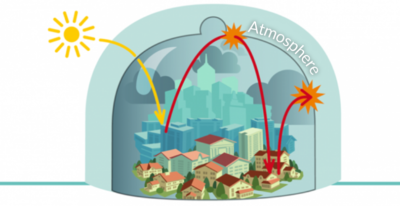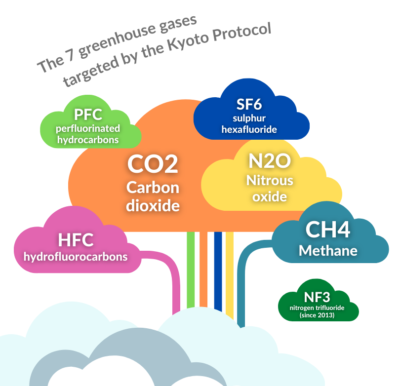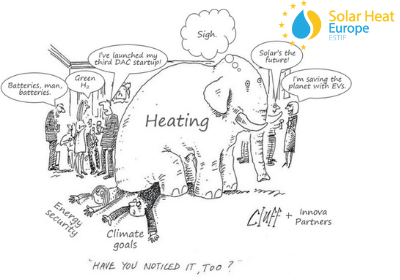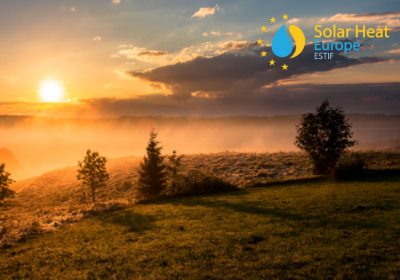Climate Change: Everything You Need to Know
Climate change is the challenge of our time, of our century. We are at a crossroads on this issue. From changes in weather patterns, which have direct consequences for agricultural and food production, to rising sea levels, which increase the risk of flooding, the consequences of climate change are global in effect and scale. Indeed, without immediate action, it will be much more difficult and costly to adapt to the future consequences that lie ahead. So it is now or never.
Climate change, what is it?
Climate change refers to changes in the climatic characteristics of a given location over time, either in terms of warming or cooling temperatures.
The planet has always had variations in climate, so climate change is not in itself something new if you look at different eras of the planet. So why are we so concerned about this issue? Simply because climate change in the past has never been so abrupt and rapid. The issue of climate change lies in these two notions: the speed of change and its brutality.
At the heart of climate change are greenhouse gases. They play an essential role in climate regulation. The greenhouse effect is a natural phenomenon that is essential for human life and for species. Without them, for example, the Earth would have an average temperature of -18°C instead of the +14°C we know and life would probably not exist.
However, more than a century and a half of industrialisation, including deforestation and large-scale agriculture, has increased the amount of greenhouse gases in the atmosphere to levels not seen in three million years. As populations, economies and living standards have grown, so has the cumulative level of greenhouse gas (GHG) emissions. As a result, the natural climate balance is shifting and the climate is readjusting by warming the earth’s surface. We can already see the effects of climate change. That is why we need to mobilise and act. Everyone is concerned: elected representatives, economic actors, citizens, to reduce our greenhouse gas emissions, but also to adapt to the changes that are already underway.
Why is the planet warming? Scientific elements
As explained in a previous article, the Earth continuously receives energy from the sun, the so-called solar energy. Some of this energy is not reflected by the atmosphere and is absorbed by the Earth’s surface, which heats up as it absorbs it. On the other hand, the earth’s surface and the atmosphere emit infrared radiation, the intensity of which increases as a function of the heat of the surfaces. Part of this radiation is absorbed by certain gases and clouds, the so-called greenhouse effect.
The second part of the energy is emitted into the universe and the Earth’s temperature is adjusted to find a balance between the energy from the sun that is permanently absorbed and that which is re-emitted in the form of infrared radiation.
The increase in greenhouse gases as a result of human activities traps some of this radiation, causing the surface temperature to rise until a new equilibrium is found. This is the main cause of the global warming observed in recent decades.

Source : Meem/Dicom
Some greenhouse gases are naturally present in the air (water vapour, carbon dioxide). While water (vapour and clouds) is the main contributor to the “natural” greenhouse effect, the increase in the greenhouse effect since the industrial revolution of the 19th century is due to emissions of other greenhouse gases caused by our activity.
Gases emitted by human activity
- The accumulation of carbon dioxide (CO2) in the atmosphere contributes to 2/3 of the increase in the greenhouse effect induced by human activities (gas and oil combustion, deforestation, cement production, etc.). Therefore, the effect of other greenhouse gases is often measured in CO2 equivalent (CO2 eq.). Current CO2 emissions will have an impact on atmospheric concentrations and global temperature for decades to come, as its lifetime in the atmosphere is more than 100 years.
- Methane (CH4): Ruminant livestock, flooded rice fields, landfills and oil and gas operations are the main sources of methane induced by human activities. The lifetime of methane in the atmosphere is about 12 years.
- Nitrous oxide (N2O) comes from nitrogen fertilisers and certain chemical processes. It has a lifetime of about 120 years.
- Sulphur hexafluoride (SF6) has a lifetime of 50,000 years in the atmosphere.

Source : Meem/Dicom
The consequences of climate change: invisible impacts.
On 9 August, the Intergovernmental Panel on Climate Change released its report, which states that climate change is already widespread, rapid and intensifying. It stresses the urgent need for a stronger response to climate change to limit global temperature rise to less than 1.5°C above pre-industrial levels.
This sixth report shows that climate change is already happening:
- Global surface temperature has increased by 1.09°C in the decade 2011-2020 compared to the decade 1850-1900.
- The last five years have been the warmest on record since 1850.
- Recent rate of sea level rise has almost tripled compared to the period 1901-1971.
- Human influence is “very likely” (90%) the main factor in the global retreat of glaciers since the 1990s and the decline of the Arctic ice sheet.
- It is “almost certain” that heat extremes, including heat waves, have become more frequent and intense since the 1950s, while cold events have become less frequent and less severe.
The IPCC also assesses how climate change will occur in the medium and long term. It predicts:
- Worsening of climatic phenomena: climate change is modifying the frequency, intensity, geographical distribution and duration of extreme weather events (storms, floods, droughts).
- Disruption of many ecosystems: with the extinction of 20-30% of animal and plant species, and major consequences for human settlements.
- Crises related to food resources: in many parts of the world (Asia, Africa, tropical and sub-tropical areas), agricultural production could decline, leading to severe food crises, sources of conflict and migration.
- Health hazards: climate change is likely to have direct effects on the functioning of ecosystems and on the transmission of animal diseases, which may contain pathogens potentially dangerous to humans.
- Acidification of waters: Increased CO2 (carbon dioxide) concentration in the atmosphere leads to higher CO2 concentration in the ocean. As a result, seawater becomes more acidic because CO2 is transformed into carbonic acid when it comes into contact with water. Between 1751 and 2004, the pH (potential for hydrogen) of ocean surface waters decreased from 8.25 to 8.14. This acidification poses a major risk to coral reefs and certain types of plankton, threatening the balance of many ecosystems.
- Population displacement: the rise in sea level (from 26 to 98 cm between now and 2100, depending on the scenario) should lead to the flooding of certain coastal areas (especially deltas in Africa and Asia), or even the disappearance of entire island countries (Maldives, Tuvalu), causing major migrations.
Experts from the State Meteorological Agency in Spain made a simulation of the consequences of climate change for Spain and the results are alarming:
- A projected rise in sea level of three metres by 2100 would mean that a large part of Barcelona, Malaga, A Coruña and Santander would be flooded, Doñana would be lost, as would most of the Rías Baixas, and the Ebro delta would disappear.
- According to the Ministry of the Environment, 74 per cent of Spanish soil is in the process of desertification and it is predicted that 20 per cent of what is safe today will be at risk in 50 years’ time. Andalusia, Extremadura, Castilla-La Mancha and practically all of the Levante region already have a large proportion of soil susceptible to degradation. This will negatively affect agricultural activities and ecosystems will be visibly affected.
- Rising water temperatures, ocean acidification and changing ocean currents are changing the distribution of species. Both the Bay of Biscay and the Atlantic are seeing their fish moving further north. This “topicalization of species” will affect 60 percent of fisheries and aquaculture. Climate change has caused inland aquatic ecosystems to change from permanent to seasonal.
- Another consequence is the invasion of new species destroying Spain’s biodiversity. One example is the zebra mussel, which comes from the Black and Caspian Seas and has colonised the Ebro and the basins of the Júcar, Segura and Guadalquivir rivers. This bivalve modifies the physical and chemical characteristics of the water, affecting the endemic flora and fauna. The tiger mosquito, which comes from southeast Asia, has begun to colonise a large part of Catalonia and the Valencian Community, and the proliferation of large banks of jellyfish along the Spanish coasts in summer is mainly due to the decrease in rainfall.
What can we do about climate change?
To limit the effects of climate change, the signatory countries of the United Nations Framework Convention on Climate Change (UNFCCC) set a goal in the Paris Agreement to “limit the global average temperature increase to well below 2°C above pre-industrial levels and to pursue efforts to limit the temperature increase to 1.5°C above pre-industrial levels, on the understanding that this would significantly reduce the risks and impacts of climate change”. To achieve this, it is essential to address the causes of climate change by controlling net greenhouse gas (GHG) emissions, known as mitigation.
However, due to climate inertia and the long lifetime of accumulated greenhouse gases in the atmosphere, temperature increases by the end of the century are inevitable and all regions of the world will be affected. Adaptation to climate change is therefore necessary to limit the consequences on socio-economic activities and nature. The objectives of adaptation are to anticipate the impacts of climate change, to limit its potential damage by intervening in the factors that control its magnitude (e.g. urbanisation of areas at risk) and to take advantage of potential opportunities.
In its latest report, the IPCC concludes that the climate is changing in all regions of the world and throughout the climate system. Many of the changes identified are unprecedented over thousands or even hundreds of thousands of years, and some of the phenomena already underway – such as continued sea level rise – are irreversible over hundreds or thousands of years. The report shows that the impact of human activities on the climate system is undeniable. But it also shows that human actions can continue to determine future climate change. A sharp and sustained reduction in emissions of carbon dioxide (CO2) and other greenhouse gases would limit climate change.
There are solutions to combat global warming.
The first angle of attack on climate change is energy, and the report goes so far as to call for “rapid and far-reaching changes”. Indeed, it is absolutely necessary to transform our energy patterns and the sectors that depend on them, such as industry, construction, tourism and transport. The energy response cannot focus solely on electricity, as this would only partially solve the problem, since according to the International Energy Agency (IEA) and the Renewable Energy Policy Network for the 21st Century (REN21), heat accounts for more than 50% of the total energy we consume in the world, which is much more than the 17% needed for electricity. The solution will therefore have to meet both electricity and heat demand: an answer offered by hybrid solar panels.

Sources:
- « La Déclaration d’Athènes, 17 septembre 2021», Elyssé.
- “El Cambio Climático en España: impacto y consecuencias », National Geographie.es
- Changement climatique : causes, effets et enjeux, Histoire Versailles
- Consecuencias del cambio climático Comisión Europea
- « Changements climatiques » Nations-Unies rapport
- « EVALUACiÓN DEL IMPACTO DEL CAMBIO CLIMÁTICO EN LOS RECURSOS HíDRICOS y SEQuíAS EN ESPAÑA”, Ministerio de Agricultura y pesca, Alimentación y Medio Ambienta de España
Share this article on your social networks
Subscribe our Newsletter!
External news
Featured Post
Recent Posts
Related Posts…
Write us, we will answer you as soon as possible.
Responsible for the data: Abora energy S.L.
Purpose: Sending emails with news and offers.
Legitimation: Your expressed consent.
Recipient: Subscribers’ list in Mailchimp.
Rights: Access, rectification, elimination, anonymity, portability and forgetting data.












